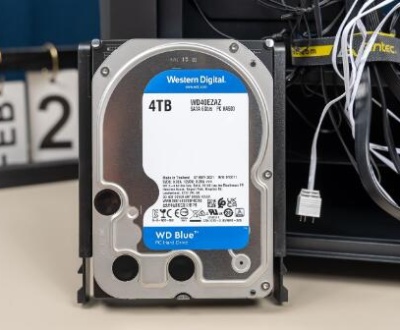Knowing which files can be safely deleted is crucial for maintaining optimal functionality and keeping your device organized.
Before diving into what files can be deleted, it’s important to understand how storage space works. Every file you save takes up a certain amount of space, and over time, unnecessary files can accumulate. Here are common file types that may consume significant storage:

Documents (e.g., Word files, PDFs)
Images (e.g., JPEGs, PNGs)
Videos (e.g., MP4. AVI)
Audio files (e.g., MP3. WAV)
Applications (e.g., software programs, games)
System files (e.g., updates, cache)
Identifying Files to Delete
1. Temporary Files
Definition: Temporary files are created by operating systems or applications during their operation. They often remain after the program is closed.
What to Delete:
System temporary files: Located in folders like C:\Windows\Temp on Windows or /tmp on macOS/Linux.
Browser cache: Clear cache and cookies in your web browser settings.
Application cache: Many apps store cache files that can be safely deleted.
2. Duplicate Files
Definition: Duplicate files occur when the same file is saved in multiple locations.
What to Delete:
Use duplicate file finder software (e.g., CCleaner, Duplicate Cleaner) to identify and remove duplicates.
3. Old Downloads
Definition: The Downloads folder often accumulates files that you no longer need.
What to Delete:
Go through the Downloads folder and remove files you no longer use, such as installation files, documents, or images.
4. Unused Applications
Definition: Applications that are no longer used can take up significant storage.
What to Delete:
Uninstall programs that you rarely use. On Windows, you can do this through “Add or Remove Programs,” and on macOS, simply drag the app to the Trash.
5. Large Media Files
Definition: Videos, music, and high-resolution images can consume a lot of space.
What to Delete:
Identify and remove large media files that you don’t need. Consider using a tool like WinDirStat (Windows) or Disk Inventory X (macOS) to visualize file sizes.
6. Old Backups
Definition: Backup files are necessary, but old backups can take up space unnecessarily.
What to Delete:
Review and delete old backups of devices or files that are no longer relevant. Be cautious not to delete recent backups you may need.
7. Email Attachments
Definition: Email programs often download attachments to your device, which can accumulate over time.
What to Delete:
Go through your email and delete attachments that are no longer needed. Consider accessing your email through a web browser to manage space without downloading files.
8. Log Files
Definition: Log files keep records of system activities and can grow large over time.
What to Delete:
Check system folders for log files (often found in C:\Windows\Logs on Windows) and delete them if they are no longer needed.
9. Cache Files
Definition: Cache files are temporary files created to speed up applications and systems.
What to Delete:
Clear cache from browsers and applications. Tools like CCleaner can help automate this process.
10. Old System Restore Points
Definition: System restore points can take up significant space on your hard drive.
What to Delete:
On Windows, you can manage restore points through System Properties and delete older ones if you’re confident you won’t need them.
Advanced Cleanup Techniques
1. Disk Cleanup Tools
Windows:
Use the built-in Disk Cleanup tool. It helps identify temporary files, system files, and other unnecessary items to delete.
macOS:
Use the built-in storage management feature. Go to About This Mac > Storage > Manage to see recommendations and options for freeing up space.
2. Cloud Storage Solutions
Consider moving files to cloud storage services like Google Drive, Dropbox, or OneDrive to free up local space while keeping files accessible.
3. External Storage Options
For files that you don’t need on your device but want to keep, consider transferring them to an external hard drive or USB flash drive.
Tips for Maintaining Free Space
Regularly Review Files: Set a schedule (monthly or quarterly) to review files and delete unnecessary ones.
Organize Files: Keep your files organized in folders to easily identify what you can delete.
Automate Cleanup: Use tools that automate file cleanup, such as scheduled disk cleanup or storage management apps.
Be Mindful of Downloads: Regularly clean your Downloads folder and set your browser to automatically delete old downloads.
Use Cloud Storage: Take advantage of cloud storage to minimize local storage usage.
Freeing up space on your device doesn’t have to be a daunting task. By identifying and removing temporary files, unused applications, duplicates, and old backups, you can significantly reclaim storage. Regular maintenance and organization will help keep your device running smoothly and efficiently. Remember to back up important files before deletion to prevent any loss of valuable data.
About us and this blog
Panda Assistant is built on the latest data recovery algorithms, ensuring that no file is too damaged, too lost, or too corrupted to be recovered.
Request a free quote
We believe that data recovery shouldn’t be a daunting task. That’s why we’ve designed Panda Assistant to be as easy to use as it is powerful. With a few clicks, you can initiate a scan, preview recoverable files, and restore your data all within a matter of minutes.
Subscribe to our newsletter!
More from our blog
See all postsRecent Posts
- How to recover deleted voicemail samsung? 2025-04-22
- Samsung portable ssd t5 online recovery 2025-04-22
- Fix western digital external hard drive 2025-04-22

 Try lt Free
Try lt Free Recovery success rate of up to
Recovery success rate of up to









